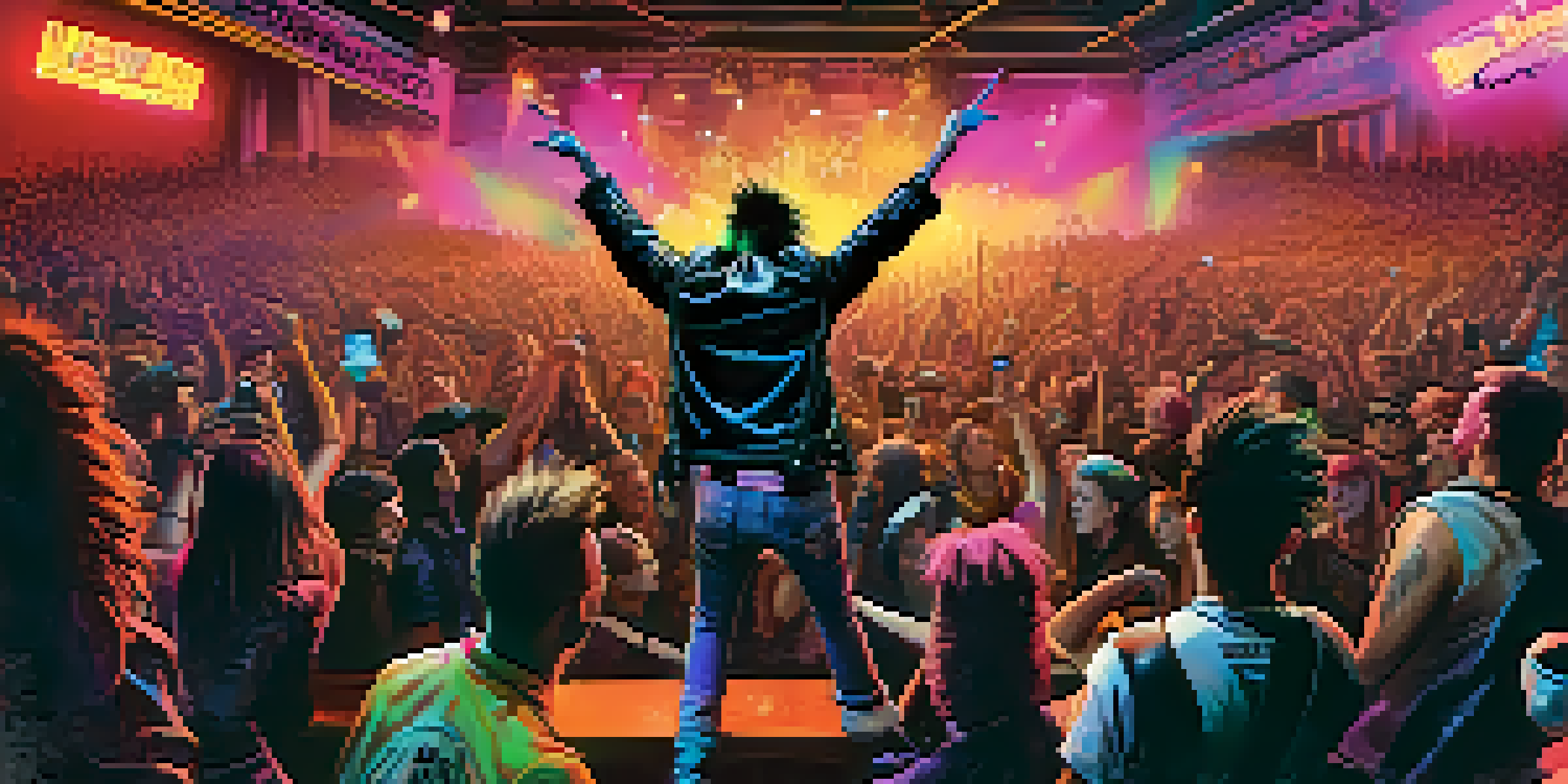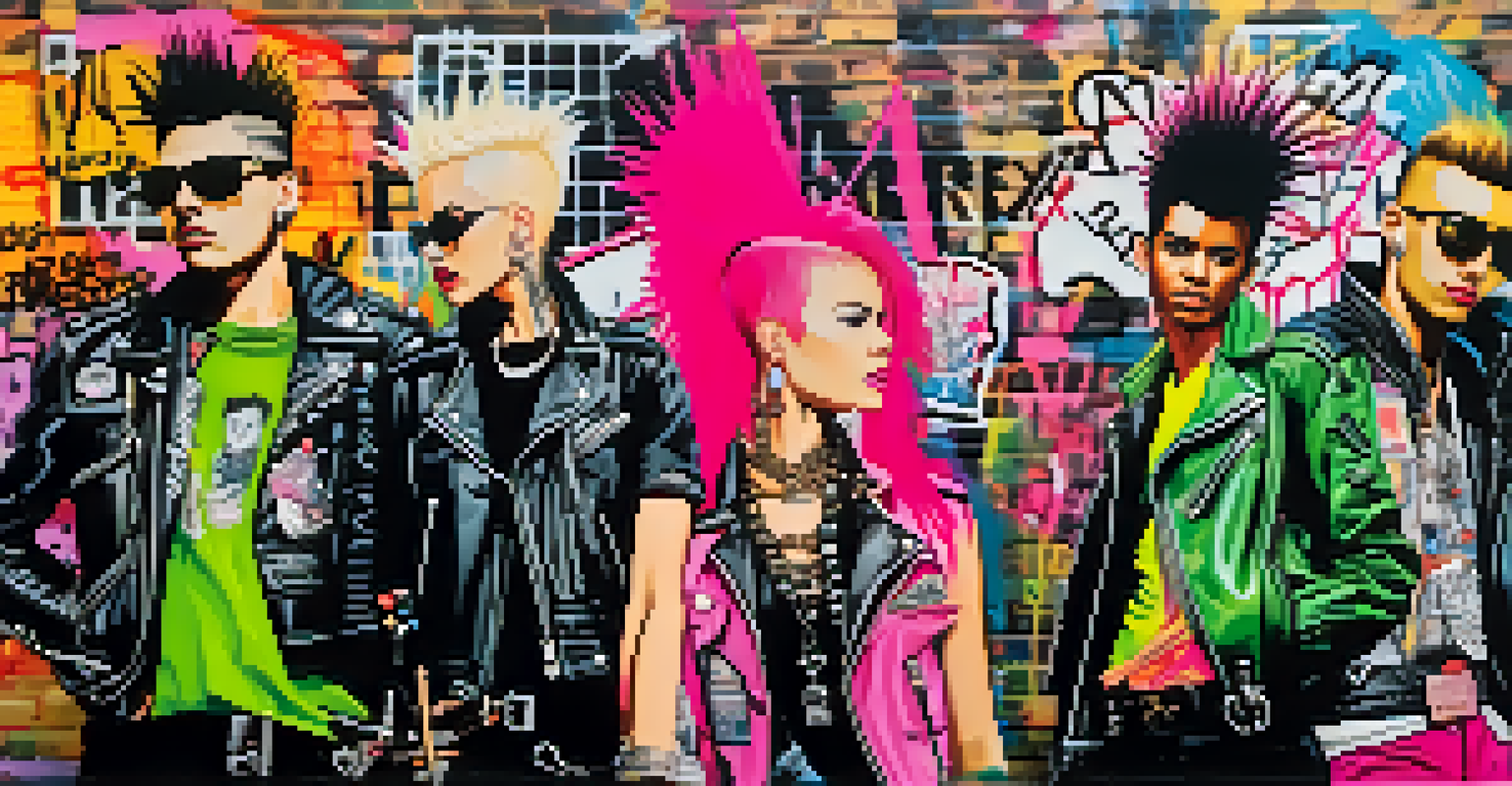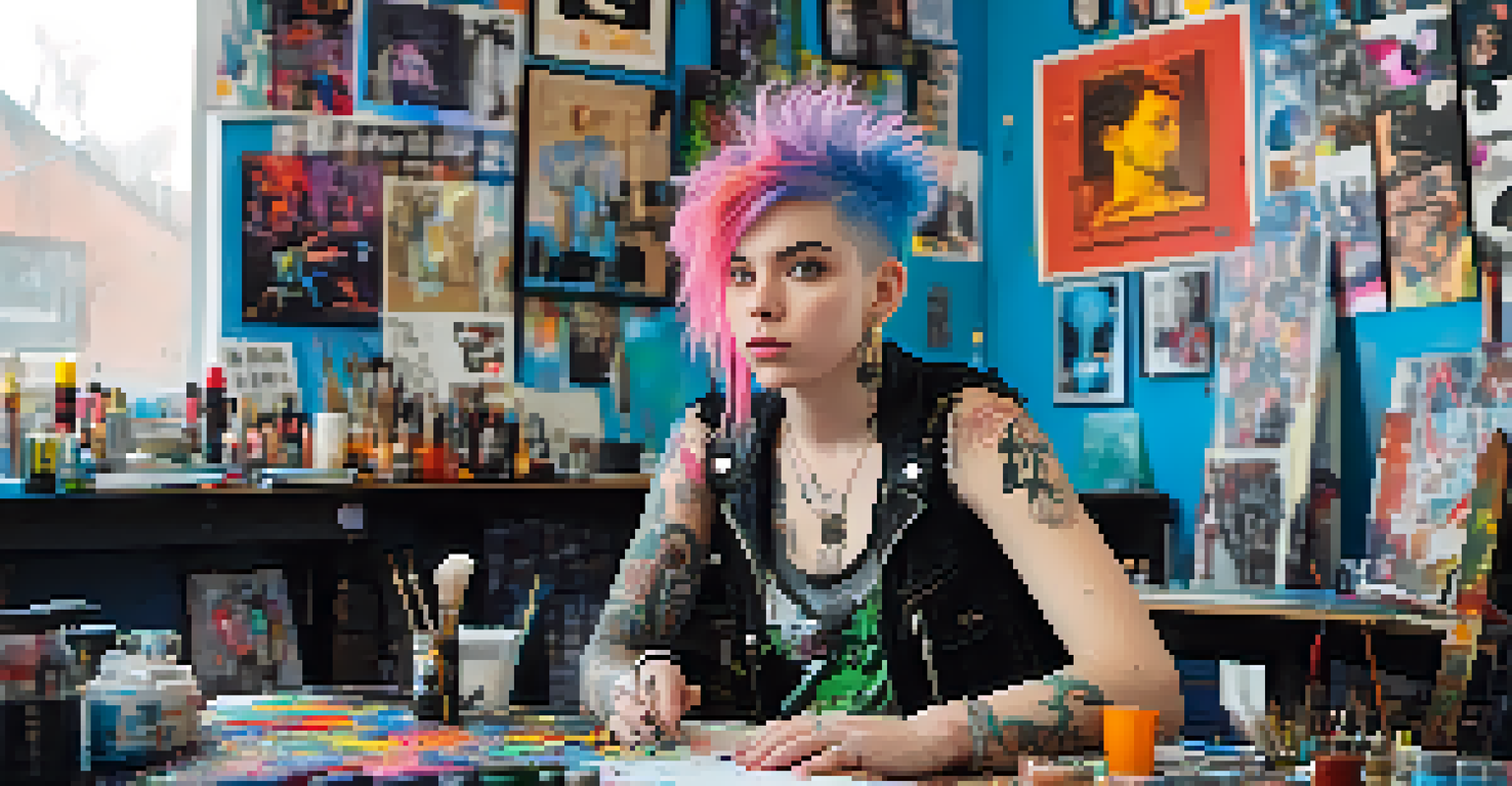The Emergence of Punk: Nightlife Changes in the 1980s

The Birth of Punk: A Cultural Response
The punk movement emerged in the late 1970s and exploded in the 1980s as a raw, rebellious response to mainstream culture. Bands like the Sex Pistols and The Ramones gave voice to a generation disillusioned by social norms and political unrest. This cultural shift wasn’t just about music; it was a declaration of individuality and resistance against conformity.
Punk is about being yourself. It’s about being free and being able to express yourself however you want.
Punk’s DIY ethos encouraged fans to create their own art, music, and fashion. Venues like CBGB in New York City became sanctuaries for these underground expressions, fostering a sense of community among punk enthusiasts. This grassroots movement drew people in, offering a space where they could truly be themselves, away from society's expectations.
As punk spread, it created a new subculture that embraced not just music but also a distinctive style. Leather jackets, ripped jeans, and vibrant hairstyles became symbols of rebellion, reflecting the anger and frustration of youth during a turbulent time. This visual identity helped solidify punk's impact on nightlife and culture.
Punk Venues: The Heartbeat of Nightlife
Punk venues played a crucial role in the nightlife scene of the 1980s, serving as hubs for creativity and self-expression. Small, intimate clubs became the breeding ground for new talent, where both established and emerging bands could perform. These venues offered an alternative to the commercialized music scene, welcoming anyone who dared to be different.

The atmosphere in these clubs was electric, filled with energy and an undeniable sense of camaraderie. Fans would gather not just to hear their favorite bands but also to connect with like-minded individuals, creating a tight-knit community. The experience was often raw and unpredictable, reflecting the very essence of punk music itself.
Punk as a Cultural Revolution
The punk movement emerged in the late 1970s as a powerful response to mainstream culture, emphasizing individuality and rebellion.
As punk music gained traction, these venues became iconic spaces that defined nightlife. They allowed for a sense of belonging and empowerment, enabling individuals to express their frustrations and hopes through music and art. The punk scene’s influence on nightlife can still be felt today, as many clubs continue to promote local talent and underground movements.
Fashion and Identity: Punk Style Takes Over
Punk's emergence in the 1980s was not just about the music; it also revolutionized fashion. The punk aesthetic, characterized by bold styles and anti-establishment messages, became a powerful form of self-expression. From spiked hair to safety pins, every piece of clothing was a statement against societal norms.
The only way to deal with the future is to function in the now.
Fashion icons like Vivienne Westwood helped solidify punk's influence on mainstream culture. Her designs incorporated elements of rebellion and nonconformity, making punk style accessible to a wider audience. This crossover allowed punk to infiltrate the fashion world, blurring the lines between high fashion and street style.
As punk fashion gained popularity, it sparked debates about identity and authenticity. While some embraced the aesthetic as a means of self-definition, others criticized it for becoming commodified. Nevertheless, punk's impact on fashion and identity remains significant, influencing countless trends and styles that persist today.
The Role of Media in Popularizing Punk Culture
The media played a pivotal role in shaping the punk movement and its reach during the 1980s. From music videos on MTV to articles in magazines, punk became more than just a localized phenomenon; it became a global movement. Coverage of punk culture helped to legitimize it, drawing in a wider audience and increasing its impact.
However, the portrayal of punk in the media was often polarized. Some outlets celebrated its raw energy and creativity, while others painted it as chaotic and dangerous. This dichotomy fueled the punk ethos of rebellion, as many fans embraced the negative stereotypes as badges of honor.
Punk Venues Foster Community
Intimate punk venues served as crucial hubs for creativity and connection, allowing fans to bond over shared values and music.
As punk gained visibility, it also sparked conversations about youth culture, politics, and societal issues. Documentaries, interviews, and news coverage brought the struggles and aspirations of the punk community to the forefront, allowing its voice to resonate far beyond the music itself.
The Global Spread of Punk: A Worldwide Movement
While punk originated in the United States and the UK, it quickly spread across the globe, inspiring diverse movements in different countries. Each region adopted and adapted punk, creating unique subcultures that reflected local issues and identities. For instance, in Latin America, punk became a voice for political resistance against oppressive regimes.
International punk festivals and exchanges fostered a sense of solidarity among punks worldwide. These gatherings showcased the music and culture of various regions, demonstrating punk's ability to transcend borders. The global punk scene thrived on collaboration, uniting people with a shared passion for rebellion and self-expression.
The emergence of regional punk scenes enriched the overall movement, introducing new sounds and styles. From Japanese punk rock to Brazilian hardcore, the diversity within punk became a testament to its universal appeal. This global exchange of ideas and creativity continues to shape the punk landscape today.
Legacy of Punk: Influence on Future Generations
The legacy of punk music and culture from the 1980s is profound, influencing countless genres and movements that followed. From grunge to alternative rock, the ethos of punk can be heard in the music of artists who came after. This spirit of rebellion and authenticity continues to resonate with new generations of musicians and fans.
Punk's impact extends beyond music into various forms of art, fashion, and social activism. Modern artists often draw inspiration from punk's DIY attitude and willingness to challenge the status quo. This influence encourages individuals to embrace their creativity and voice their opinions on social and political issues.
Digital Age Revives Punk Spirit
In the digital era, punk's DIY ethos thrives through social media and independent music production, empowering a new generation of artists and activists.
As we look back on the emergence of punk in the 1980s, it’s clear that its spirit lives on. The movement's core values of individuality, community, and resistance continue to inspire those who seek to challenge societal norms and express themselves freely. Punk may have evolved, but its essence remains a vital part of contemporary culture.
Punk and the Digital Age: A New Era of Expression
In the digital age, the punk ethos has found new avenues for expression and connection. Social media platforms allow artists and fans to share their work and ideas instantly, creating a global community that transcends physical boundaries. This accessibility has revitalized the punk spirit, inspiring a new wave of creativity and activism.
Online platforms have enabled the rise of DIY music production, allowing aspiring artists to bypass traditional gatekeepers. Many punks now release music independently, reflecting the original spirit of the movement. This shift empowers individuals to take control of their artistic journeys, echoing the DIY principles that defined the punk era.

Moreover, digital activism has emerged as a powerful tool for social change, echoing punk's roots in political resistance. Many contemporary punks use their online presence to raise awareness about social issues, mobilizing communities for causes they believe in. In this way, the punk movement continues to adapt and thrive, proving that its legacy is far from over.